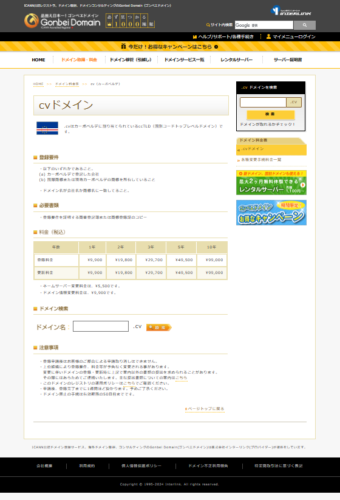Cape Verde is a group of 10 islands in the Atlantic Ocean that cover an area about the size of Shiga Prefecture (4,033km2). The islands gained independence from Portugal in 1975. Unable to rely on agriculture due to the dry climate, residents took advantage of their geographical location between Europe and Africa, becoming a relay and supply base for air and sea transportation and deep-sea fishing. Currently, the main industries are fishing and tourism.
Our Domain Island Tour team visited Sal Island, which is part of the northern group of Barlavento Islands. Sal means salt in the local Portuguese language. The ccTLD for Cape Verde is “.cv“.
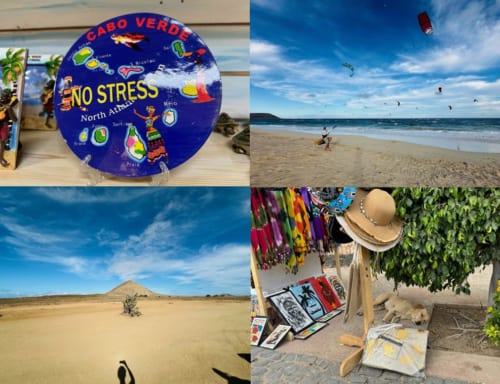
◆Where is Cape Verde?
Cape Verde is located approximately 400 km west of Cape Verde Peninsula, Senegal, and 375 km from the West African mainland. It has an approximate population of 560,000 (in 2021) and the currency is the Cape Verdean escudo (CVE) or the Euro (1 Euro = 110.265 CVE*), which operates at a fixed rate. The official language is Portuguese.
* As of January 2024
= Table of Contents =
◆An Airport Without eGates
◆Everyone Knows the Song, Sayko Dayo
◆Strolling Around Santa Maria
◆Kitesurfing in a No Stress Country
◆Huge Salt Fields and The Blue Eye of Summer
◆What to Eat in Cape Verde?
◆Finding .cv Around Town
◆Purchasing a SIM Locally & Testing the Internet Speed
◆An Airport Without eGates
We flew to Sal Island from Lisbon, Portugal. We flew on the Portuguese airline, TAP Air Portugal.
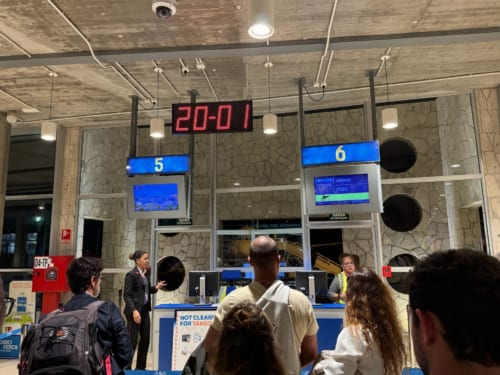
We arrived at Amílcar Cabral International Airport at around 1am. The surrounding area was completely dark.
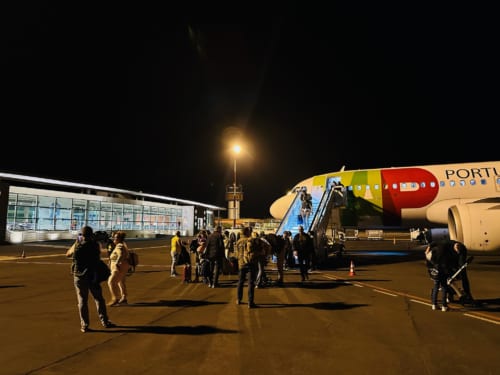
Time to go through immigration. We had completed the necessary steps in order to use eGates (automated gates) before leaving Japan, which would allow us to skip the long lines at immigration, making for a smooth and stress-free immigration clearance at our destination country. We head toward the gates.
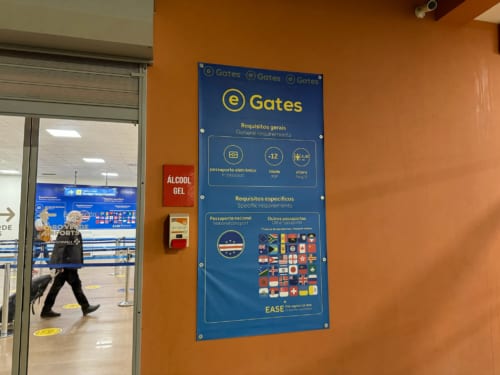
We arrive at the gates. Huh? What’s this? We can’t get through! When we ask the airport staff for help, they tell us that the automated gates can’t be used. There’s nothing else for us to do but join the line for immigration. Since there may be other countries without automated gates, keep this in mind when you’re preparing for your trip.
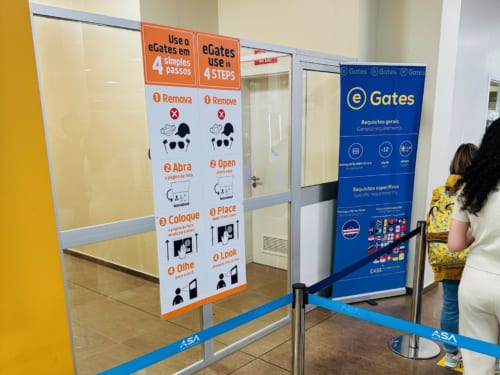
We took a taxi to the hotel where we will be staying.
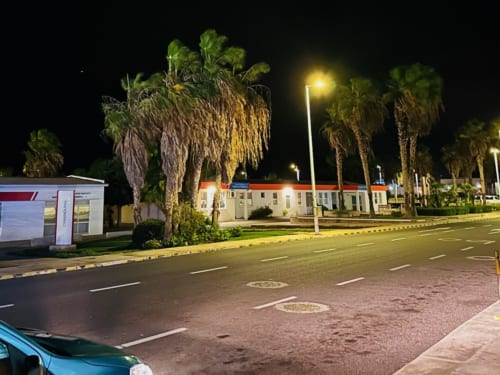
It takes just 15 minutes to our hotel, Hotel Sobrado. When checking in, we’re given wrist bands to wear. It helps to identify those who are staying at the hotel.
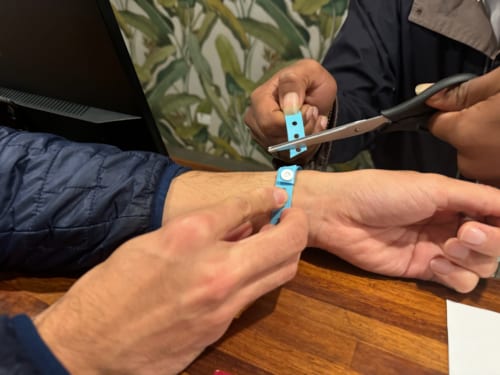
It makes us feel like we’re in a club or an outdoor event. It’s a little annoying to have to wear it while showering and sleeping.
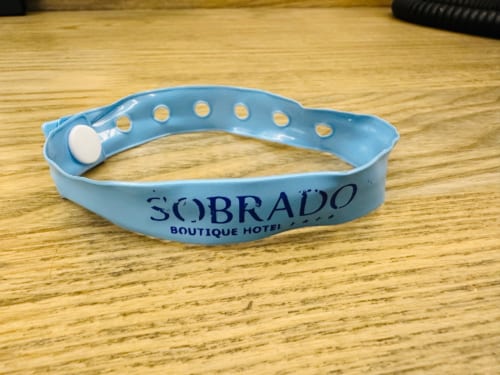
The hotel was clean and very comfortable.
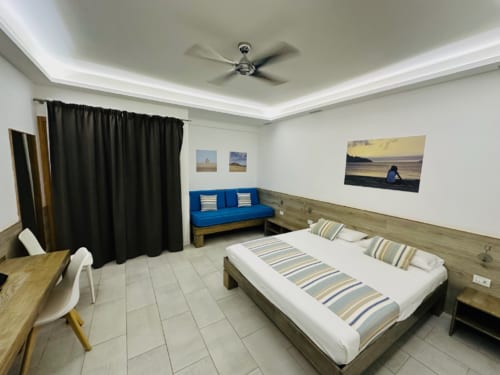
◆Everyone Knows the Song, Sayko Dayo
There’s a song called Sayko Dayo that everyone on Cape Verde seems to know. The title and lyrics include some Japanese. But, is it true that everyone knows it? We asked our taxi driver on the way to the hotel.
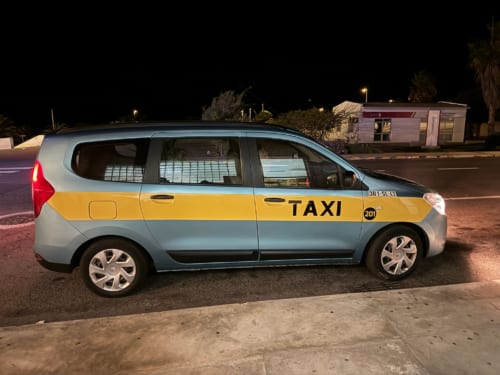
“Of course I know it!”, he said and promptly played it for us in the taxi.
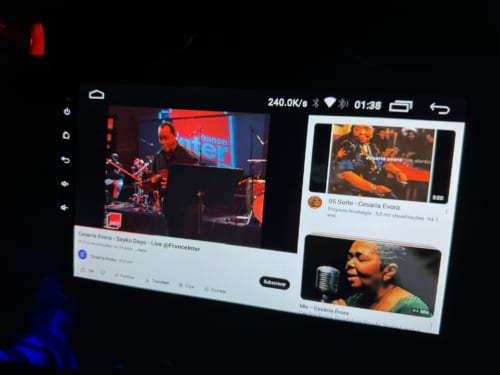
“Sayko Dayo” (or “saiko daiyo”, meaning “the best” or “awesome” in Japanese) are the actual song lyrics, not just a funny case of misheard lyrics. For around ten years, starting in 1963, many tuna boats from Japan would fish at São Vicente, located northwest of Cape Verde. When they’d catch a large number of fish, the fishermen would say “saiko da!”. These fishermen, who also taught the locals karate and the Japanese language, became an everyday, ordinary sight and they ended up developing a close friendship. Thus, the well-known Cape Verde musician Ti Goy wrote and composed the song Sayko Dayo from the Japanese expression. Even today, it’s considered a traditional song and many artists like to cover it.
Cape Verde’s most famous singer, Cesária Évora, has also covered it and it’s a popular version among the locals. The chorus “Sayko, sayko, sayko dayo” quickly got stuck in my head!
The next morning, we awoke feeling “sayko”. We ate breakfast in the hotel.

Hotel Sobrado has been open since March 2018. Located in the southern part of Sal Island, it’s just 15 minutes from Amílcar Cabral International Airport. It’s also very near to the bustling city Santa Maria, which is very convenient.

Let’s go out and explore. We stepped outside, full of enthusiasm, only to find the wide area surrounding the hotel was just vacant land. I guess we didn’t notice it in the dark last night.

◆Strolling Around Santa Maria
We headed towards the main street of Santa Maria, a small city with apparently not a lot to see or do. Along the way, we saw several supermarkets run by Chinese residents.

These men were standing around a bucket of fish.
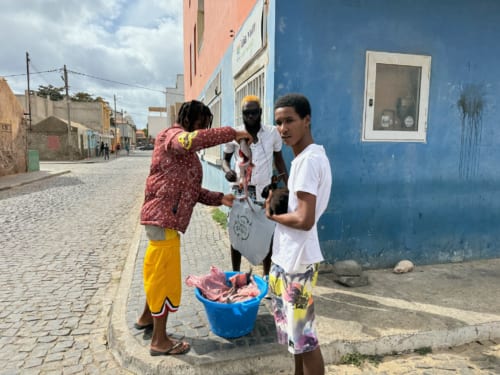
The man in the white T-shirt who is facing the camera was holding a rabbit, and they have matching piercings. We ask them what they are up to.
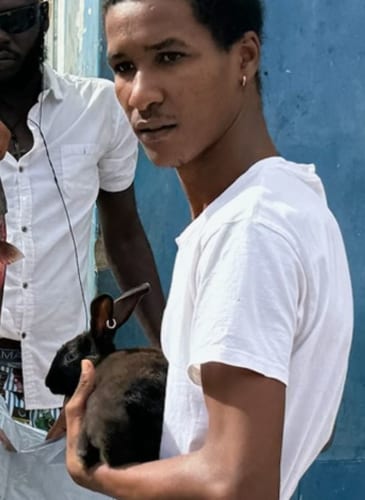
The man in the yellow pants told us they were selling fresh fish. There are no stores or stalls nearby. They are selling them on the side of the road in a residential area. These fish are for grilling. The man in the white T-shirt told us the rabbit is his pet.

We walk through this alleyway. Children are playing with a soccer ball. It’s a peaceful scene.
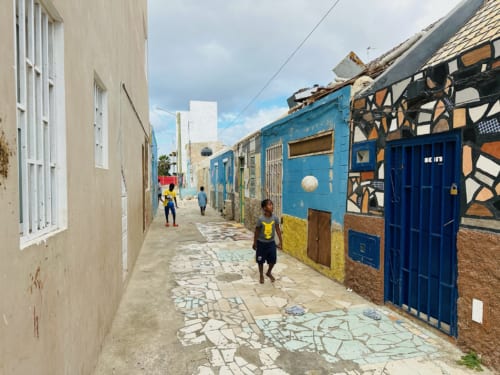
Coming out of the alleyway, we see some street art. The woman pictured is Cesária Évora, who sings “Sayko Dayo”.
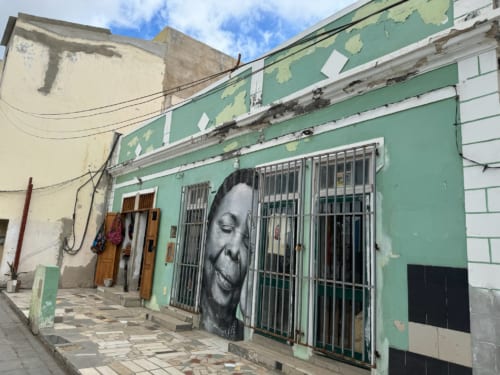
This one is perhaps of the local soccer team?
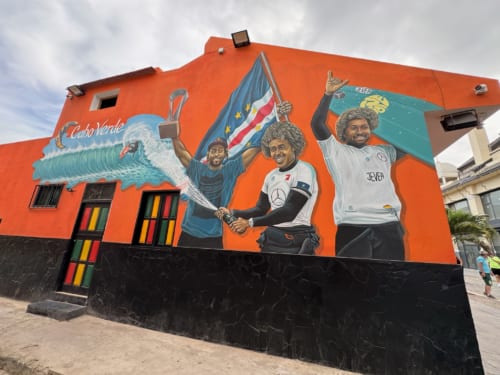
We’re now in the main street. It took about 5 minutes from the hotel. It’s bustling with tourists, most of which seem to be from Europe. It suddenly feels very touristy, with many stores and stalls selling souvenirs.
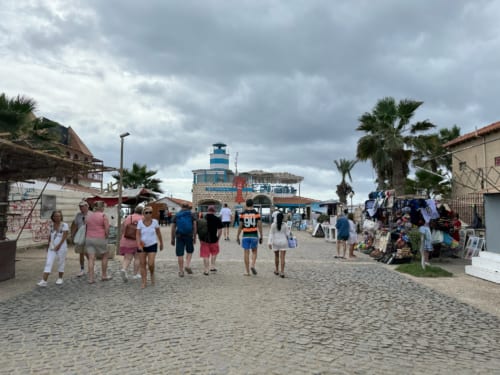
This dog is taking a nap next to one of the stalls. It looks like he fell asleep while looking after the stall.
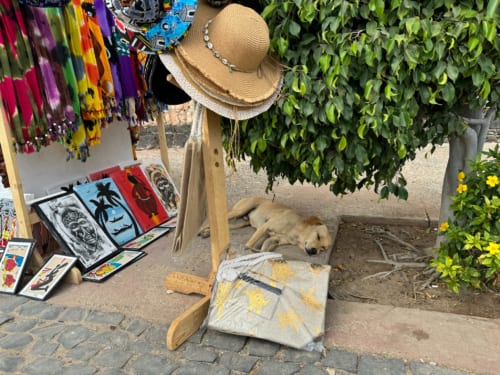
◆Kitesurfing in a No Stress Country
At the end of the Main Street, you’ll find The Pier of Santa Maria. Street stalls selling souvenirs, knick-knacks, clothes, etc., line the path leading to the sea.
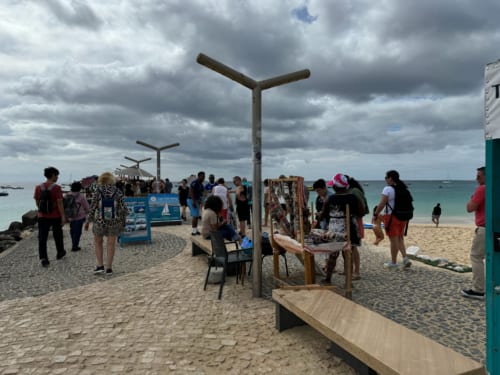
Fresh fish is also sold on the pier.
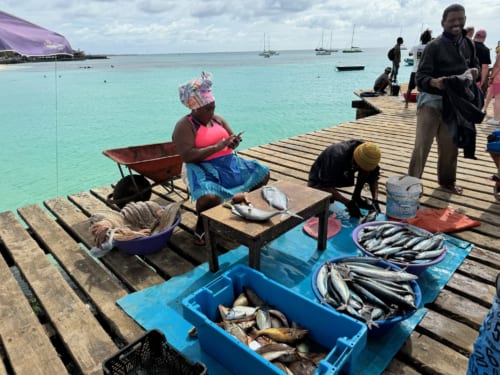
They’ll even cut and trim the fish for you. It’s not the way we do it in Japan, but it’s a system that works well here! As they say, “When in Rome…”
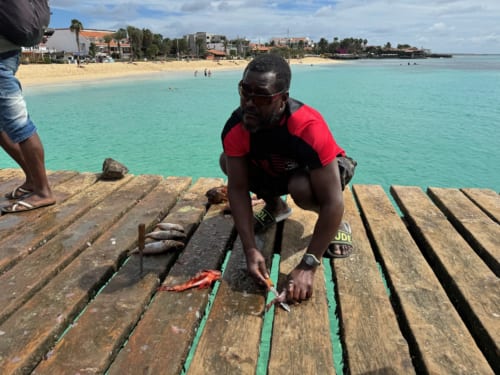
The view of the beach from the pier is very beautiful. Unlike the crowded pier, the beach is almost empty.
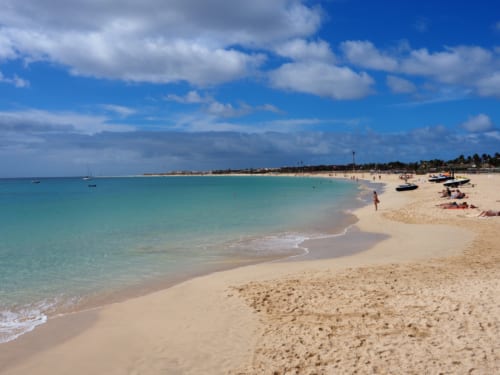
I spoke with a man who had a monkey and he put the monkey on my head and shoulders. We took photos, but he didn’t ask for money.
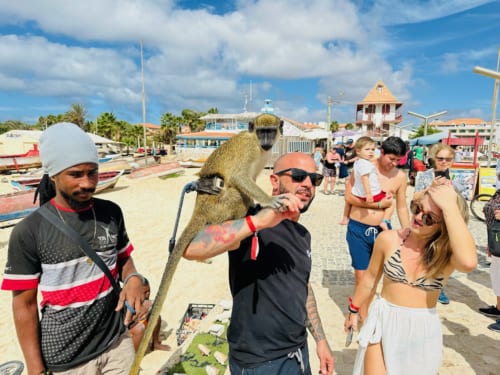
We came across a man with a Dragon Ball tattoo that ran from below the knee all the way to his ankle. Dragon Ball is really a worldwide phenomenon!
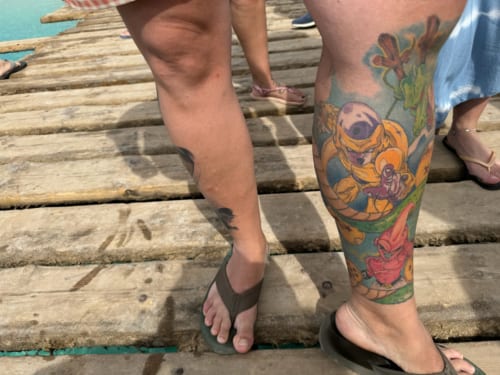
The motto of Cape Verde is “No Stress”. You’ll find all kinds of things, including souvenirs, with this catchphrase written on it.
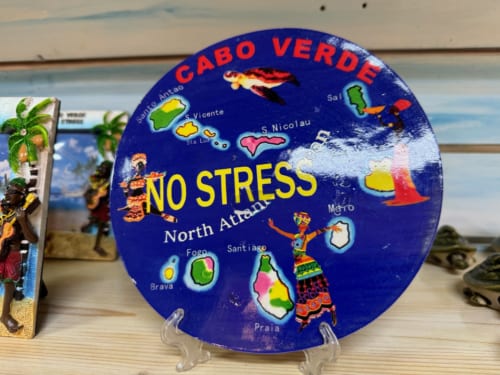
The idea is; what’s most important is helping one another and not sweating the small stuff. I bought this cute tote bag so that I will always remember the motto of Cape Verde.
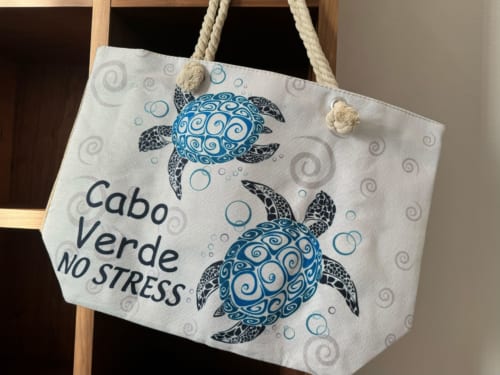
After we had finished looking around The Pier of Santa Maria, we visited Kite Beach, which is about ten minutes away by car. As you drive closer, you will start to see lots of kites in the air.
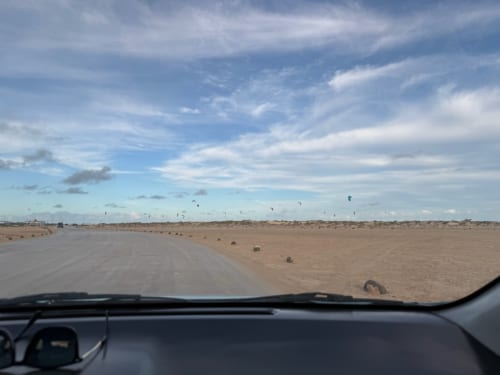
We’ve made it to the beach. You can see why it’s called Kite Beach. Lots of people are also enjoying kitesurfing. In Japan, too, gayla kites (tail-less wing kites) used to be very popular 30-40 years ago.

Kitesurfing is a competitive sporting event, developed from kiteboarding. Kiteboarding is a water-sport that uses specialized kites to glide across the water while riding on a board. This is one of those specialized kites. Pretty big, isn’t it!
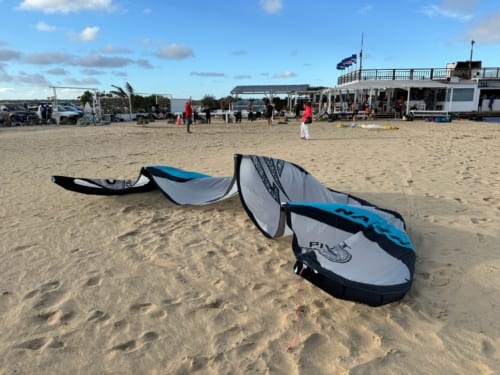
It’s unknown how many people do this in Japan, but it seems to be a minor sport. Kite Beach is used for international competitions as the wind can get very strong here.
◆Huge Salt Fields and The Blue Eye of Summer
Our next destination is Salinas de Pedra de Lume. We head north through an empty, bleak landscape.
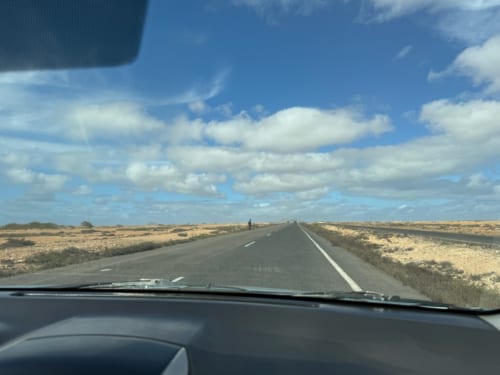
It looks like a desert.

We’ve arrived at the salt fields.
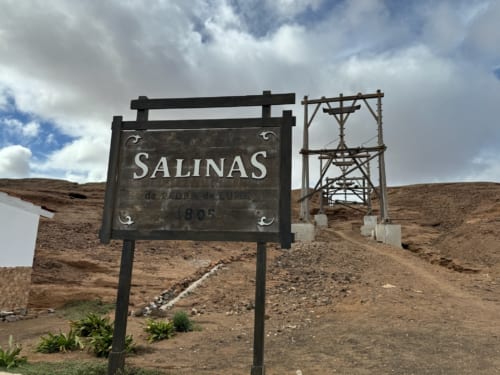
We pay an entry fee of €6 per person.
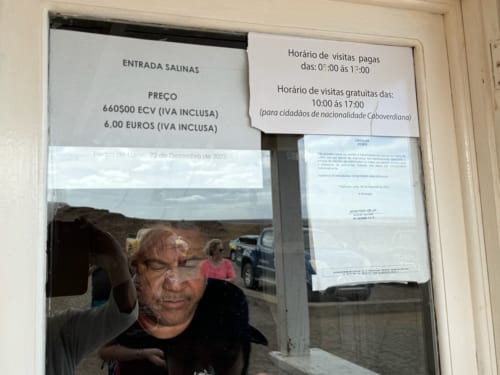
After going through the entry gate, we pass through a tunnel that takes us to the salt fields. The wooden structures in the photo were previously cable car pylons that were used to transport salt. It was in 1833 that mineral-rich salt was first discovered here. The problem was, how to get the salt all the way to the port of Pedra de Lume? In the beginning they used animals to transport the salt, but in 1921 they switched to cable cars. The cable car ran for 1,100 meters and had a capability of transporting 25 tons of salt per hour.
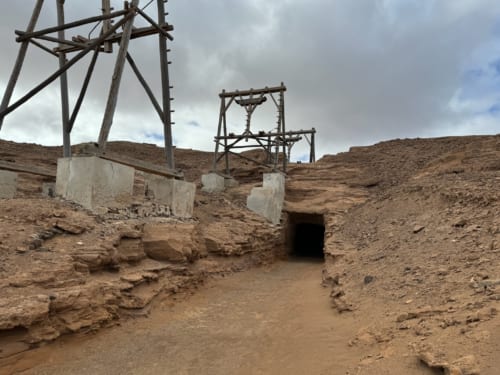
Exiting the tunnel, we see salt fields on a scale far beyond anything we imagined. These salt fields are on the UNESCO World Heritage candidate list.。
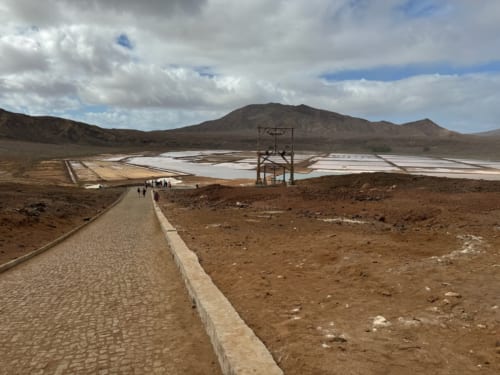
According to a travel website for Cape Verde, we should see scenery where “the white and bright pink salt pans contrast with the snow-white salt mountains and the blue sky”, but unfortunately, we didn’t see any pink. It’s not the first time on our Domain Island Tour where reality didn’t quite live up to expectations, like some scenic spots of Samoa and the Seven Colored Earths of Mauritius.
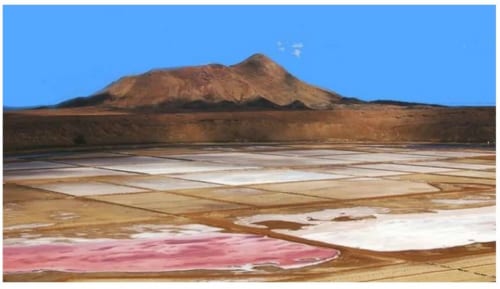
CapeVerdeislands.org
We shake off our disappointment and continue on, seeing an area of white to our left. Let’s take a closer look.

It’s a pretty huge area.
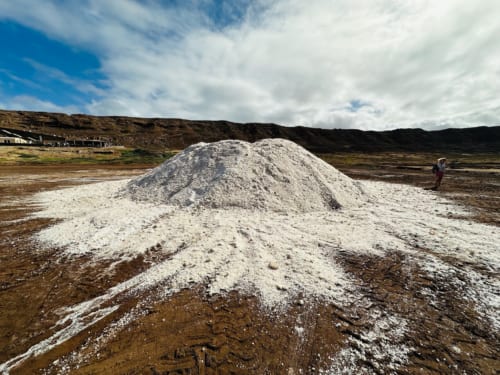
And it’s definitely salt.
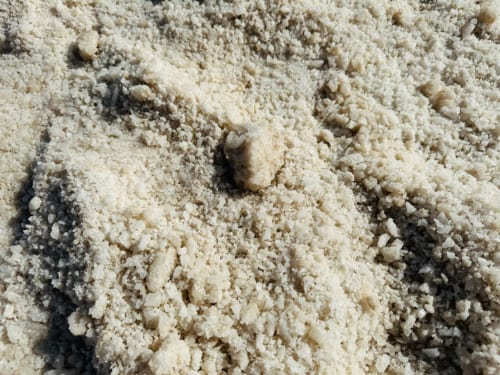
Included in these salt flats is the world’s second saltiest lake after the Dead Sea, which you can actually swim in (swimsuit and water shoes required). It’s so salty that even if you can’t swim, you can lie back and float.
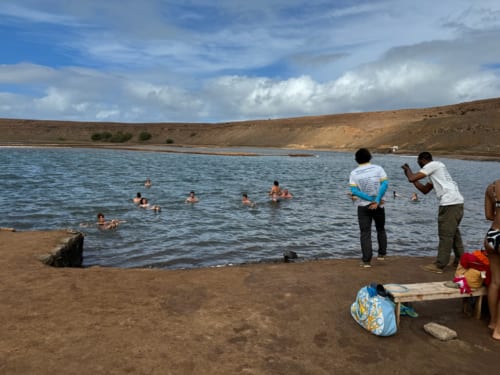
After enjoying our time at the salt flats, we went to check out a spot called The Blue Eye. The Blue Eye is a cave opening where, when the sun hits it in the right spot, a beautiful “blue eye” appears.
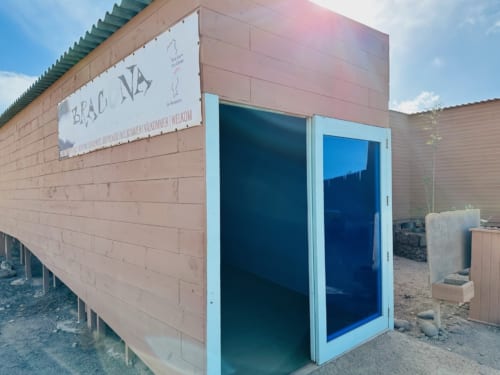
Unfortunately, we were told at reception that it’s best seen between 11am and 1pm in the summer, so we wouldn’t be able to see it today. But since we were already there, we decided to check out the area anyway.
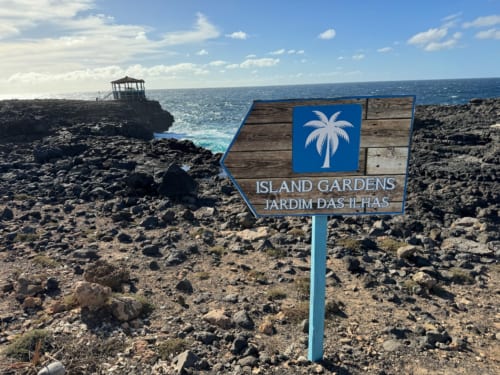
Some of the paths looked quite dangerous if you happened to fall over the edge.

We saw many warning signs – No Littering, No Dogs, No Pooping etc.
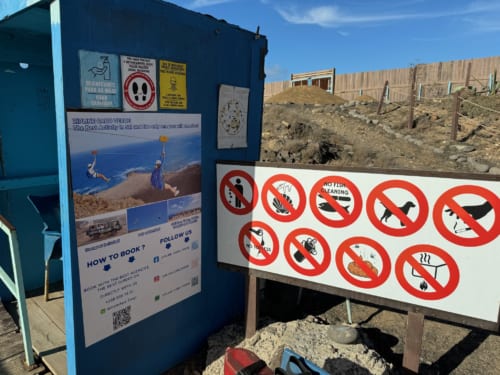
Here is the spot where you can see The Blue Eye. No one else is here. The hole is unusually deep and I felt a bit scared looking into it.
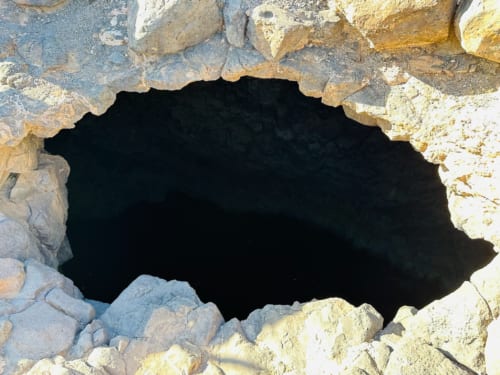
If we had come at the right time, we could’ve taken beautiful photos like this one.
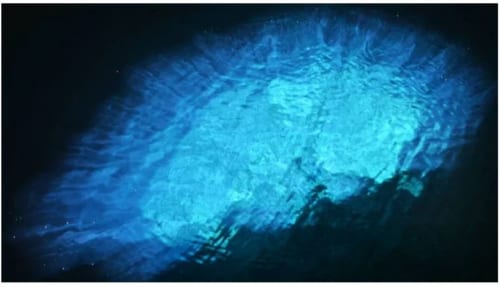
参照元 CapeVerdeislands.org
◆What to Eat in Cape Verde?
For lunch, we went to the The Bounty Beach Restaurant, an affiliate of the Hilton chain that is located close to the Hilton Cabo Verde Sal Resort. It’s a 15-minute walk from The Pier of Santa Maria. It’s a bit of a walk, but it’s in a quiet location and the restaurant is beautiful.
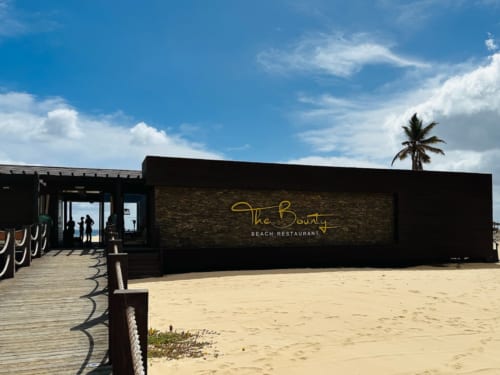
We enjoyed our lunch in the open-air seating area with a stunning view of the beach.
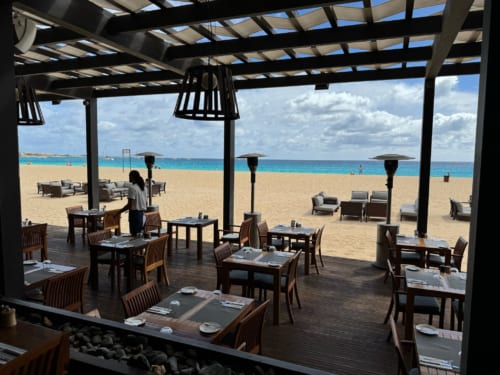
Cape Verde’s local beer, “Strela” (500CVE). It has a light and refreshing taste.
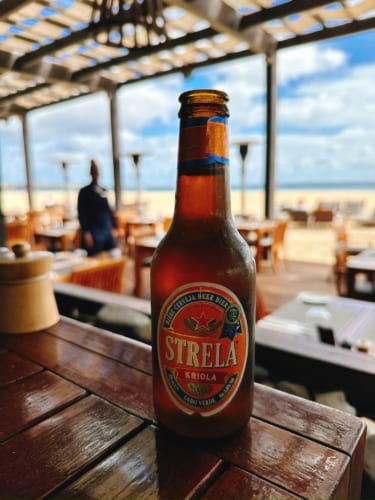
Cachupa, a traditional Cape Verde dish (1,400CVE) There’s nothing too unusual about this dish. The beans are delicious.
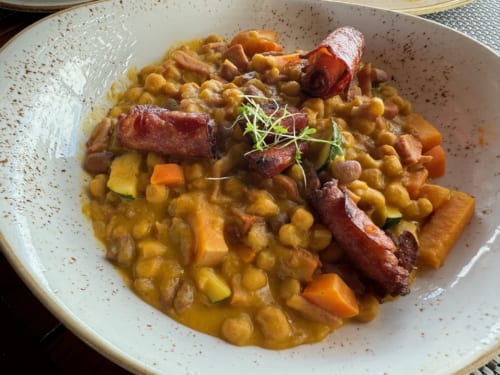
For our main dishes we ordered seafood. “Mojo Picon Octopus” (2,800CVE).
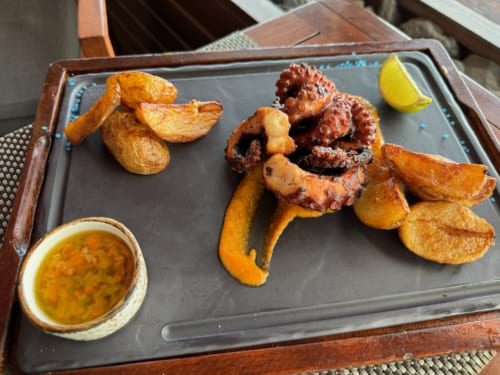
“Grilled Tuna Risotto” (2,400CVE).
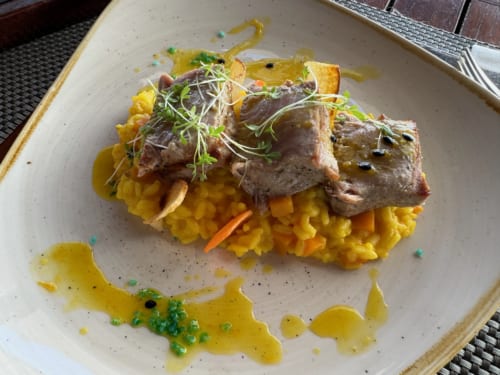
“Organic Veggie Soup” (800CVE). The restaurant was very nice and all the dishes were seasoned perfectly.
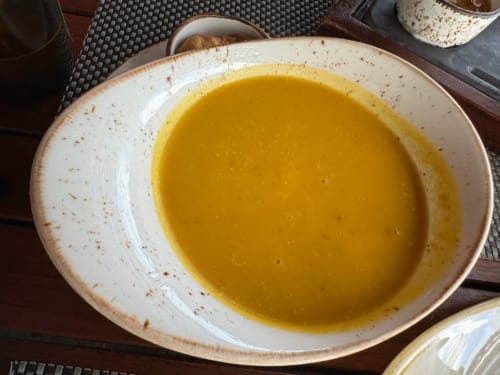
◆Finding .cv Around Town
While looking for the domain “.cv”, we also found “.site” in use. “lobstar.site” is advertising a restaurant that specializes in lobster.
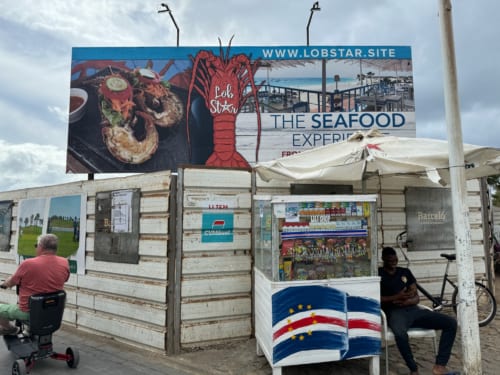
This one says “.golf”. When you see “.golf” in the address, it’s pretty easy to tell it’s a website about golf.
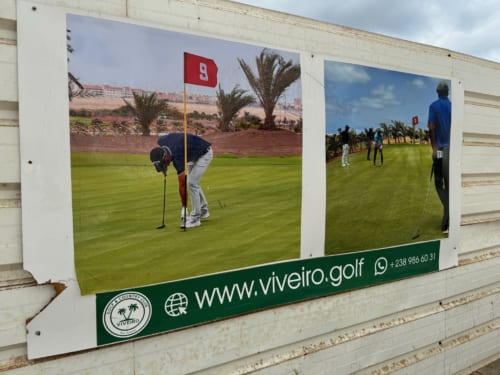
The offices of “JP Construções”, a residential construction company in Santa Maria. They’re using “.cv”.
“cvtelecom.cv” is the domain of a Cape Verdean telecommunications company.

“.cv” is being used on an advertisement for a jet boat tour. It’s a pretty busy area but this dog is enjoying a nice nap. It seems like Cape Verde is a No Stress country for dogs, as well as for humans.
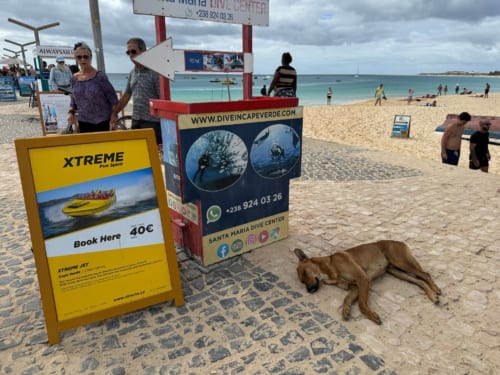
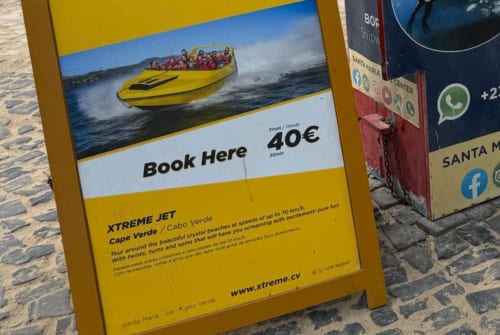
◆Purchasing a SIM Locally & Testing the Internet Speed
We used eSIM’s MTX Connect. Around Santa Maria on Sal Island, we recorded about 25 Mbps.
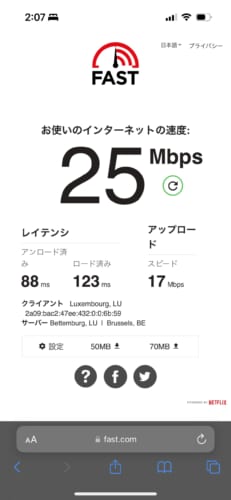
In our hotel, Hotel Sobrado, we recorded 47 Mbps.
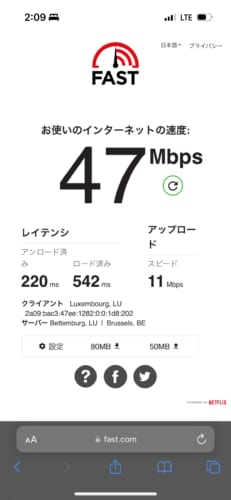
We bought our SIM cards locally.
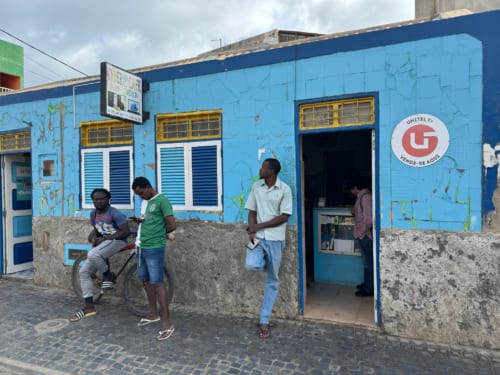
The price was as low as €10 for 10GB of data roaming. The staff helped to set it up for us.
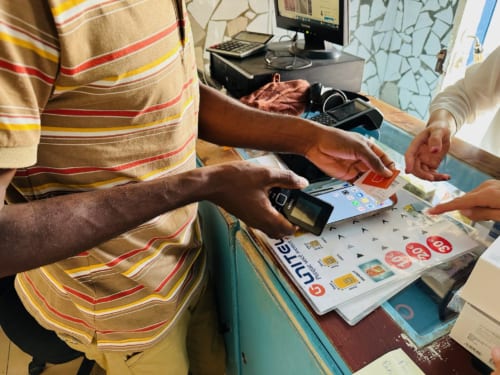
When we measured the speed, it was almost the same as the eSIM.

■For “.cv” domain details here
